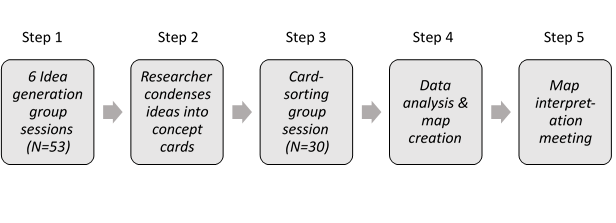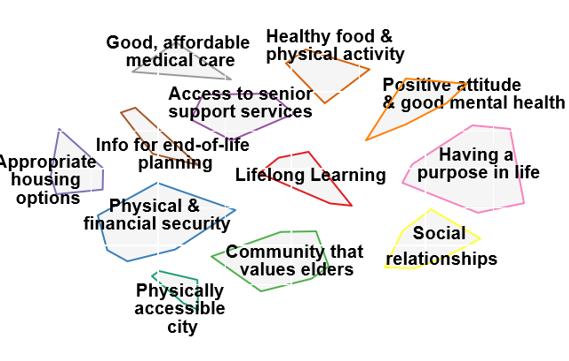Healthy Aging in the Circumpolar North Using Concept Mapping
The research question: how do older adults conceptualize healthy aging in Anchorage, and what are the barriers and facilitators to aging well in this urban subarctic environment? This question is being addressed with the following research objectives using Concept Mapping (CM) methodology:
- Aim 1: Identify the aspects of life that older adults and other stakeholders utilize to define healthy aging.
- Aim 2: Identify the way stakeholders conceptualize the obstacles and opportunities to aging well in Anchorage.
- Aim 3: Quantify the relationships between how participants define healthy aging, its barriers, and the facilitators in Anchorage to identify future health programming needs.
Findings
Fifty (N=53) stakeholders living in Anchorage will be asked to participate in one of four different focus groups in February via nonrandom purposive sampling. These stakeholders will include older adults (aged 55+), aging advocates, gerontology researchers, and public health specialists and will be invited to participate via invitation from the researcher, student assistant volunteering at the Anchorage Senior Activities Center, word-of-mouth from other participants, flyers at several retirement communities and housing complexes in Anchorage, The bulletin board at the YMCA, and an ad in the local Senior Voice paper.
Forty two (N=42) stakeholders participated in the card-sorting session (12 responses could not be analyzed), where they grouped 100 idea cards into concepts into 12 different clusters (below). We are currently collecting data in Phase II, asking older adults how important an feasible each of these concepts is to achieve in Anchorage.
Fifty four (N=54) older adults then completed a survey to rank the most important and most feasible components of healthy aging in Anchorage.



References
- Howell B.M., Seater, M., McLinden, D. 2020. Using Concept Mapping Methods to Define "Healthy Aging" in Anchorage, Alaska [published online ahead of print, 2020 Jan 8]. Journal of Applied Gerontology, doi:10.1177/0733464819898643
- Howell, B. M., Seater, M., Davis, K., & McLinden, D. Determining the importance and feasibility of various aspects of healthy ageing among older adults using concept mapping. Ageing & Society, 1-19. doi:10.1017/S0144686X20001580









